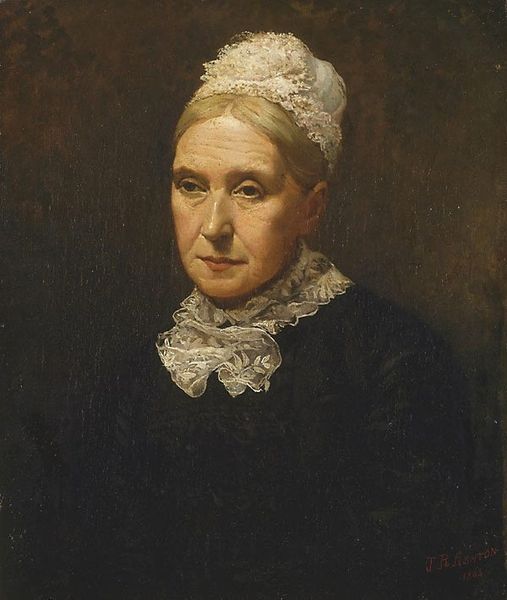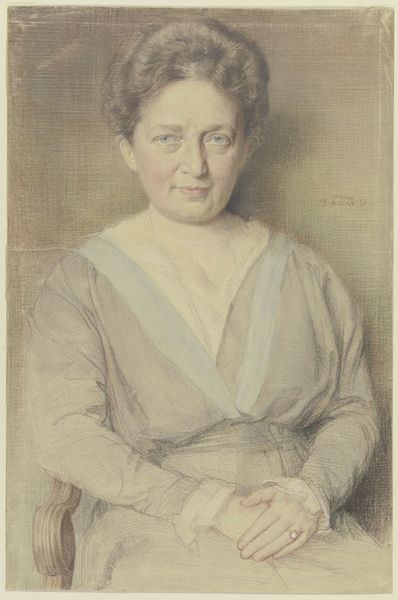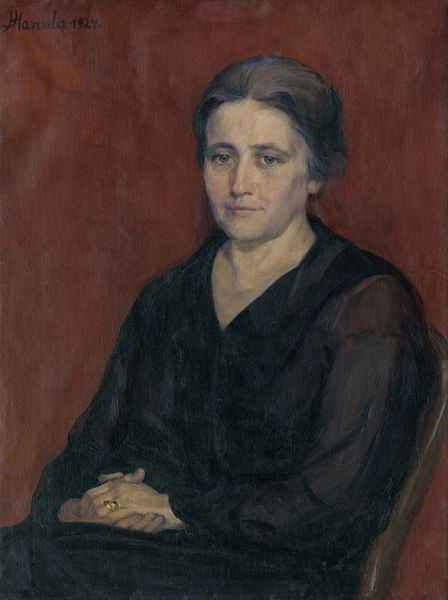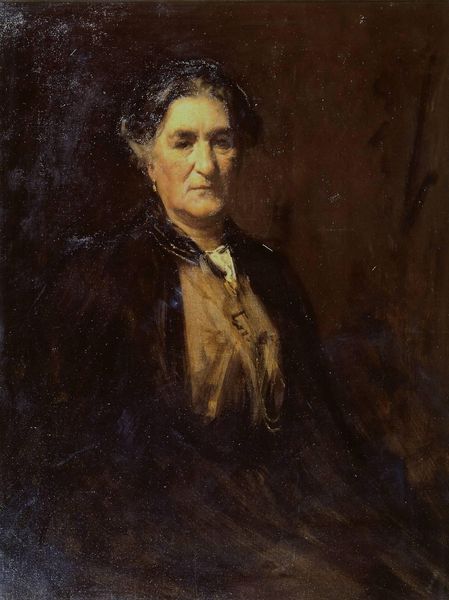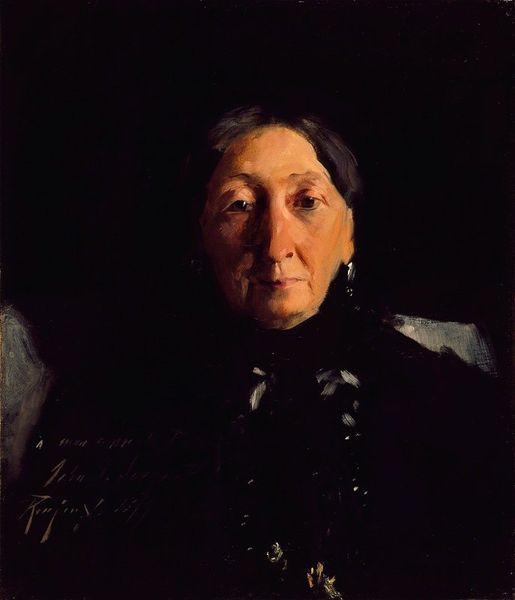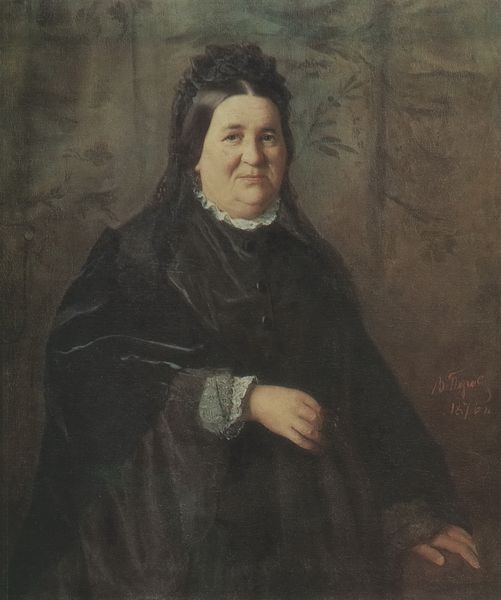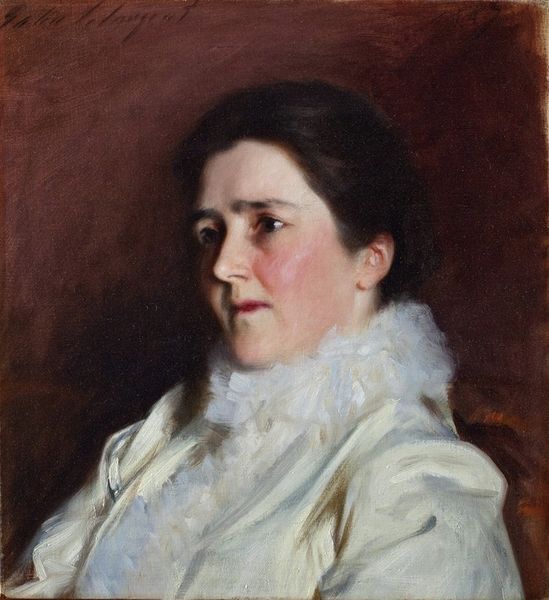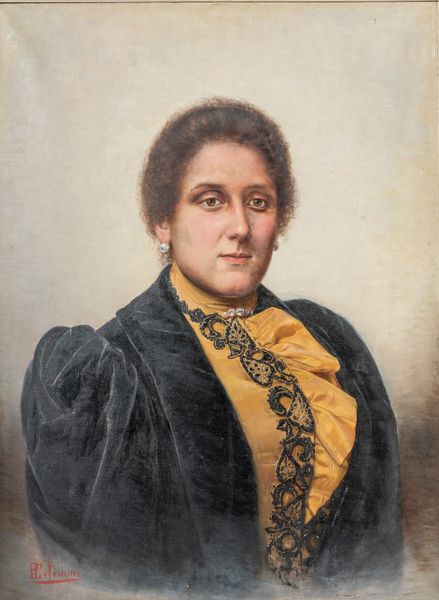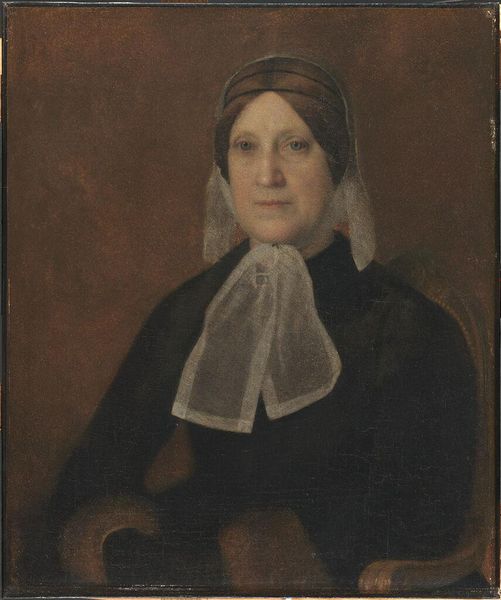
Copyright: Public domain US
Editor: This is Zinaida Serebriakova's "Portrait of N. Lanceray. Mom," painted in 1912. It's an oil painting, and I'm immediately struck by how grounded and self-assured the subject appears. What are your thoughts when you see this piece? Curator: Well, knowing it's from 1912, just before the major upheavals of World War I and the Russian Revolution, it feels significant that Serebriakova is portraying a strong, maternal figure with such quiet dignity. How do you think societal expectations for women at that time might influence how we read this portrait? Editor: That's a good question. Considering the period, women were often depicted more passively. This portrait challenges that stereotype. The mother’s direct gaze feels like a statement. Curator: Exactly. And that direct gaze engages with a growing dialogue among the Russian avant-garde about national identity and representation. Do you think there’s a connection between her straightforward portrayal and the larger cultural push to redefine Russian art and values? Editor: I think there is. Instead of idealized beauty, Serebriakova presents a very real, almost ordinary woman. Was she perhaps rebelling against the more romantic or academic styles popular at the time? Curator: It could be seen that way. There's a deliberate focus on the individual rather than a symbolic figure, moving away from prescribed societal roles, wouldn't you say? Editor: Yes, it’s less about what she represents and more about who she is. I never thought about how historical context could be a statement through art, thanks! Curator: Indeed. Exploring the social and political backdrop provides a more intricate appreciation of this, revealing narratives beyond what first meets the eye.
Comments
No comments
Be the first to comment and join the conversation on the ultimate creative platform.
